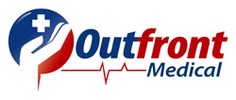Why Using Ozone to Sanitize Your CPAP or BiPAP Is Not Recommended
Aug 22nd 2025
Why Using Ozone to Sanitize Your CPAP or BiPAP Is Not Recommended
Continuous Positive Airway Pressure (CPAP) and Bi-level Positive Airway Pressure (BiPAP) machines are essential devices for individuals with sleep apnea and other breathing disorders. Because these machines are used daily—and involve direct contact with your airways—keeping them clean is critical for both hygiene and health.
Over the last few years, several companies have marketed ozone-based cleaning devices as a quick and convenient way to sanitize CPAP and BiPAP equipment. While this may sound appealing, it’s important to know that ozone cleaning is not recommended by the FDA or equipment manufacturers. In fact, it can pose risks to both your health and your machine.
What Is Ozone Cleaning?
Ozone is a gas sometimes referred to as “activated oxygen.” Ozone cleaners claim to disinfect CPAP and BiPAP machines by using this gas to kill bacteria, viruses, and mold. Unlike soap and water cleaning, which requires some manual effort, ozone machines advertise a hands-off sanitizing process.
While this sounds convenient, there are serious concerns.
Why Ozone Cleaning Is Not Recommended
- Health Risks from Ozone Exposure
Ozone is a respiratory irritant. When inhaled, even at low levels, it can cause:
- Throat irritation
- Coughing
- Shortness of breath
- Worsening of asthma or other lung conditions
If any ozone remains in your CPAP or BiPAP tubing or mask after cleaning, you may breathe it in while using your device. The FDA has specifically warned that ozone can leak from these machines and pose risks to users.
- Lack of FDA Approval
As of today, the FDA has not cleared or approved any ozone-based CPAP or BiPAP cleaners. This means there is no government-verified evidence proving that ozone machines are both safe and effective for this purpose.
- Damage to Your Equipment
Ozone is highly reactive. Over time, it can break down the plastics, silicone seals, and other materials in your CPAP or BiPAP equipment. This may cause premature wear, air leaks, or device malfunctions. Since most manufacturers do not endorse ozone cleaning, using such a device may also void your equipment warranty.
Safe Alternatives for Cleaning
To ensure your CPAP or BiPAP stays clean and safe to use:
- Daily cleaning: Wash your mask cushion and tubing with warm, soapy water, then rinse thoroughly and air dry.
- Weekly cleaning: Wash your humidifier chamber and headgear.
- Manufacturer’s guidelines: Always follow the cleaning instructions provided with your device.
For convenience, some people use CPAP mask wipes (alcohol-free) for daily maintenance between washes.
Final Thoughts
While ozone cleaning devices may promise an easy solution, the risks outweigh the benefits. Ozone exposure can be harmful to your lungs, may damage your equipment, and is not FDA-approved. The best way to protect both your health and your investment is to stick with tried-and-true cleaning methods recommended by your CPAP or BiPAP manufacturer.
? Bottom line: Soap, water, and a little time are still the safest and most effective ways to keep your CPAP or BiPAP clean.
